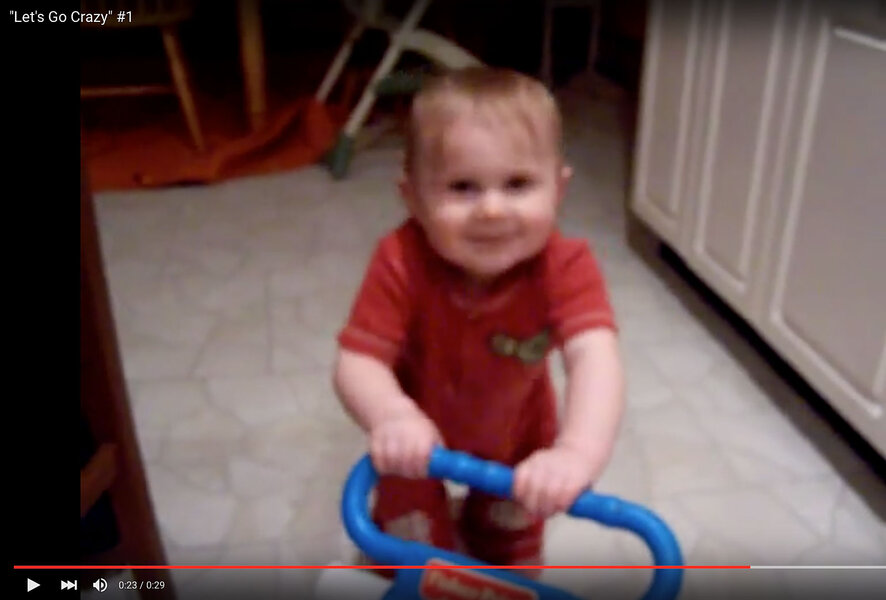How a dancing baby video could change copyright law
Loading...
The video of Stephanie Lenz's baby is 29 seconds long and blurry, with so much static in the background that the song by Prince "Let's Go Crazy" is barely recognizable. The use of that song, however, has led to eight years of litigation and a major ruling on copyright law.
The video was uploaded to YouTube in February 2007. Universal Music asked YouTube to take the video down because of an alleged copyright violation. It went back up a few weeks after that and now has more than 1.3 million views. The baby's mother and video owner, Stephanie Lenz, has sued Universal Music for the takedown, and a court ruled Monday that the case will go to trial, reports the New York Times.
The 9th Circuit Court of Appeals made a ruling that will impact more than just dancing babies. It will change the laws surrounding copyright and fair use. Fair use means parts of a copyrighted work can be used without penalty for comment, journalism, education, and research. Ms. Lenz said her video was fair use; Universal Music still disagrees.
A jury will decide whether Universal Music did enough to verify whether use of the song was fair or not before sending a takedown notice, according to a statement by the Electronic Frontier Foundation. The foundation, which provides legal defense for Lenz, is a nonprofit that aims to "defend free speech online, fight illegal surveillance, advocate for users and innovators, and support freedom-enhancing technologies."
This decision will make it harder for copyright holders to stop copyright violations quickly because they have to investigate a fair use defense before asking for a takedown. The even bigger potential blow to copyright holders is that Lenz can seek damages from Universal Music if it can't prove fair use was considered, the Associated Press reports.
This could stop companies from sending long lists of takedown notices to web providers as many have been doing under the Digital Millennium Copyright Act.
A copyright writer for TechDirt, Mike Masnick, writes that this may not change things in practice because of a massive loophole. "The court says a copyright holder can't just "pay lip service" to the idea that it checked on fair use, but in the same paragraph admits that, well, it basically can," writes Masnick. "Even worse, it says that forming a 'good faith belief' doesn't require actually investigating the details."
The ruling also gives a "near-endorsement of mass takedown routines," allowing large companies to use computer algorithms that automatically cull and file thousands of takedown notices at a time, Joe Mullin writes for Arstechnica.
A spokesperson for the Recording Industry Association of America responded for Universal Music, Arstechnica reported. "We respectfully disagree with the court’s conclusion about the DMCA and the burden the court places upon copyright holders before sending takedown notices. But we are pleased that the Ninth Circuit made it clear that a court may not second guess a copyright owner’s good faith belief that the fair use does not excuse infringing conduct."






